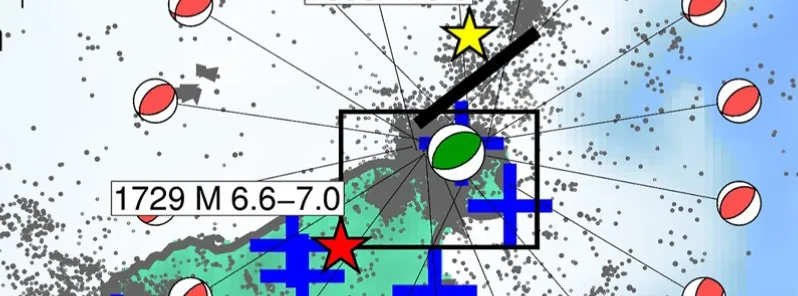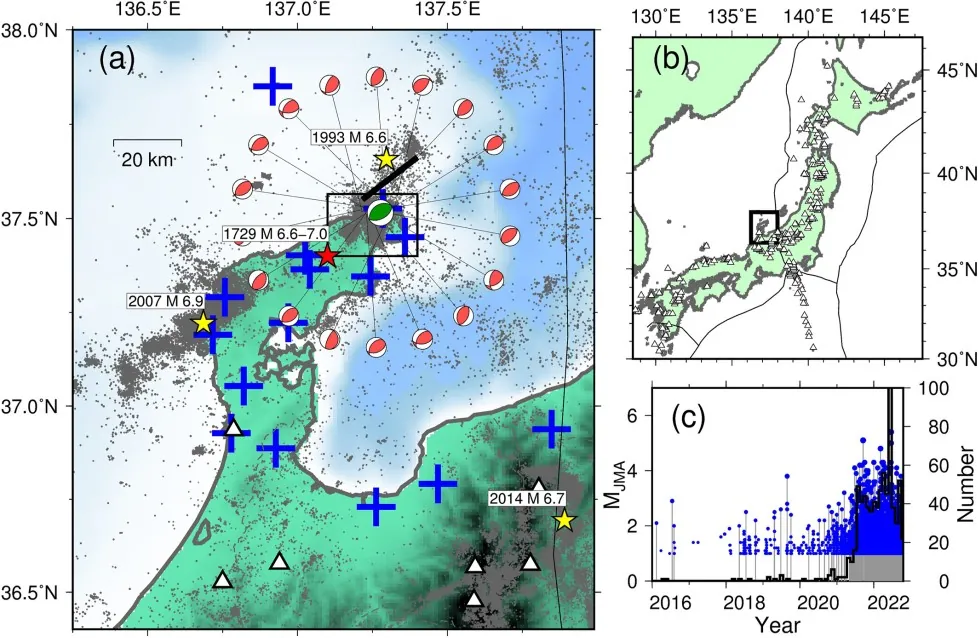Intense earthquake swarm in Noto Peninsula linked to ancient or hidden magmatic activity, Japan

An intense earthquake swarm that began around the end of 2019 in the northeastern Noto Peninsula, Japan, has been tied to fluids released by ancient, or possibly unknown modern, magmatic activity. This finding, published in JGR Solid Earth, challenges previous assumptions that such seismic activity could not occur in areas devoid of volcanic activity for over 10 million years.
The scientific study, published recently in JGR Solid Earth, has traced the ongoing intense earthquake swarm in Japan’s northeastern Noto Peninsula to the release of fluids from ancient or unrecognized modern magmatic activity. Until the end of 2019, the region, bereft of volcanic activity since the middle Miocene (15.6 million years ago), had never experienced such a swarm.
Researchers employed precisely determined earthquake locations and seismic reflectors to investigate the cause of this swarm. A review of the relocation of 10 940 earthquakes with magnitudes above 1 revealed that they all had a crustal origin and migrated upwards, activating a complex network of faults at depths shallower than 20 km (12.4 miles). The swarm’s beginning occurred at a locally deep depth (z = 17 km / 10.5 miles), and the local hypocenter distribution demonstrated a characteristic circular pattern.

According to the study authors, “The earthquakes moved from deep to shallow depths via many planes, much like earthquake swarms near volcanoes.” The strongest of these earthquakes, at a magnitude of 5.4, occurred near the migration front on the most significant planar structure. The team has cautioned that further earthquakes could occur in this fault’s shallow parts.
The study’s key finding was the detection of a distinct S-wave reflector, suggesting a fluid source, in the vicinity of the swarm’s initiation point. The local hypocenters show a circular pattern analogous to the ring fault above a magma reservoir. These observations indicate that the ongoing seismic activity is influenced by fluids related to ancient or previously unrecognized modern magmatic activity.
The study’s findings highlight that even in regions where no volcanic activity has been observed for more than 10 million years, hidden magma-induced structures and fluids can generate earthquakes.
References:
1 Upward Earthquake Swarm Migration in the Northeastern Noto Peninsula, Japan, Initiated From a Deep Ring-Shaped Cluster: Possibility of Fluid Leakage From a Hidden Magma System – Keisuke Yoshida et al. – AGU / JGR Solid Earth – June 2023 – https://doi.org/10.1029/2022JB026047 – OPEN ACCESS
Featured image: JGR Solid Earth / Yoshida et al.

Commenting rules and guidelines
We value the thoughts and opinions of our readers and welcome healthy discussions on our website. In order to maintain a respectful and positive community, we ask that all commenters follow these rules.